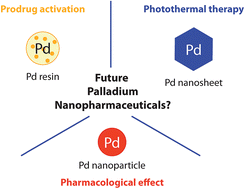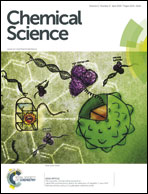Palladium: a future key player in the nanomedical field?
Abstract
Metal nanostructures offer invaluable possibilities for targeted drug delivery, detection/diagnosis and imaging. Whereas iron, gold, silver and platinum nanoarchitectures have largely dominated this field to date, several hurdles impede the widespread application of those nanopharmaceuticals in a clinical context. Therefore, technologies based on alternative metals are now being evaluated for their potential in medical applications. Palladium nanostructures are characterized by remarkable catalytic and optical properties. However, until recently, very few studies have taken advantage of these unique characteristics for applications in the biomedical field. Very recently, palladium nanostructures have been reported as prodrug activator, as photothermal agents and for anti-cancer/anti-microbial therapy. With only a handful of reports available, the pharmaceutical applications of palladium nanostructures reviewed here are in their infancy. Yet their interesting performance and toxicity profiles may qualify them as future key players in the nanomedical field.

- This article is part of the themed collection: Global challenges: Health & Food

 Please wait while we load your content...
Please wait while we load your content...